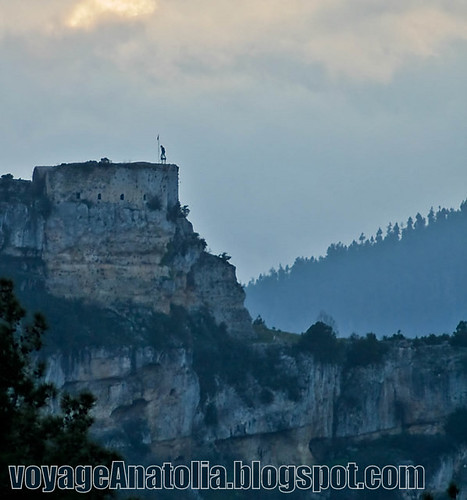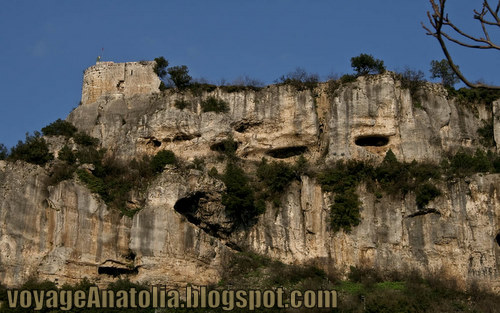
Castle of Namrun, originally uploaded by voyageAnatolia.blogspot.com.
Namrun castle near Tarsus, Turkey.
Located on the Taurus Mountains, the fortress guarded the impregnable Cilician Gates, the important crossing point on the road to Tarsus and the plain of Cilicia.
From the southern part of the pass, on the flat top of a steep rocky outcrop, stand the imposing fortress walls and towers of the upper and lower, over the remains of a large residential development.
The earliest known occupation of the place is Byzantine. It is not certain whether there were older inhabitants in lack of archaeological excavations, although given the situation it is very likely. (Lampron, Les Embruns, Lambron)
